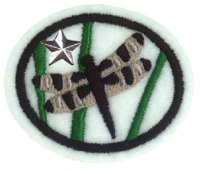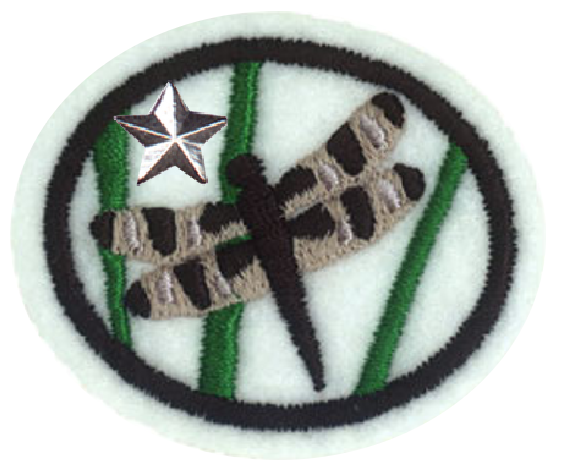Especialidades JA/Odonatos - Avanzado/Respuestas
Nivel de destreza
2
Año
2011
Version
20.12.2025
Autoridad de aprobación
Asociación General
1
Para consejos e instrucciones, véase Odonatos.
2
Antes de que pienses que tienes que aprender un montón de nuevos términos, date cuenta que todos menos dos términos son iguales al requisito del nivel básico. Tiene sentido desarrollar ambos niveles juntos.
2a
2b
2c
2d
2e
2f
2g
2h
2i
2j
2k
2l
2m
2n
2o
2p
2q
s a "bloom" caused by pigment on top of an insect's cuticle that covers up the underlying coloration, giving a dusty or frosted appearance. The pruinescence is commonly white to pale blue, but can also be gray, pink, purple, or red; these colors may be produced by Tyndall scattering of light. When pale in color, pruinescence often strongly reflects ultraviolet.
3
See guidance in Requirement 4.
4
This requirement builds on requirement 9 in the basic honor.
Since there are over 5900 species in the world and perhaps several hundred where you live, A good field guide will come in handy.
- For North America try Dragonflies through Binoculars: A Field Guide to Dragonflies of North America. This book allows for quick and easy identification of all the 300-plus species of dragonflies that have been found in the United States and Canada. In these well-illustrated pages, Sidney W. Dunkle answers any query the beginner or expert might have on the subject of dragonfly-watching on this continent--what kind of binoculars to buy, where to start looking for dragonflies, how to photograph these striking creatures, which clubs or societies to join, and so forth. Other important features for this handy field guide include detailed accounts of every species mentioned, useful information on habitats, explanations of mating rituals, full-color photographs of most of the species described, and range maps. You can also access it for free at Google Books.
- For Australia try The Complete Field Guide to Dragonflies of Australia This photographic guide covers the 324 species of damselflies and dragonflies of Australia. Each species is given a color photograph, text, a color range map and usually line drawings. Anyone interested in Australian damselflies and dragonflies will like this book.
- For Southern Africa try Field Guide To Insects Of Southern Africa
- For Trinidad try Dragonflies of Trinidad
Please add other guides for different regions you find helpful.
Happy hunting.
5
Here is a video on how to catch and preserve dragonflies with some interesting details.
Catching
The first step is to find an Odonate. The best way is to use a net, as catching with hands has a high failure rate and is likely to injure the insect.
Method #1: The SWING METHOD is for flying insects. Swing the net like a baseball bat and try to catch the dragonfly in it. Follow through on your swing, especially with flying odonates, (like a tennis serve or golf swing) so that the dragonfly is completely in the net and can't fly out. As you end the swing, close the net by rotating the net handle.
Method #2:The PANCAKE METHOD is for resting insects. Just put the net over the insect. Once you've trapped the dragonfly, hold the net flat on the ground and lift the closed end of the net with your hand. Usually the dragonfly will fly up into the net. Than grab the net below the dragonfly and close it to keep the dragonfly in.
Like most things, the best way to catch a dragonfly is from behind. If possible avoid allowing your shadow to fall across the insect since their view is blocked directly to the rear. It is also best to swing at flying insects from behind if possible for the same reason and it avoids having the dragonfly crash head-on into the net.
Now you need to remove the dragonfly from the net. Try to get all 4 wings and hold them together above the ode's back. Then gently take the bug out of the net. Be careful. Remember the idea is to not injure the insect. It is possible to pull off a leg or the head (especially if it is biting the net) You also do not want to get hurt. Dragonflies can bite fingers and it can hurt. They will also chew off their own abdomens once captured if their abdomen is not straight. Place it in a paper or glassine envelope. Handle with care, and do not crush the envelope.
Mounting
Create a killing jar. Fill a wide-mouth jar one quarter full with absorbent material, and add ethyl acetate (like nail polish remover) into the jar until it is absorbed. Include tissue paper strips inside the jar, allowing the insect a place to hide. This keeps it from damaging itself trying to escape. Make sure no liquid remains in the jar when you place the insect inside. Add the dragonfly and leave it there until it dies. It should be quick.
Now to mount. Arrange the insect how you want it to look permanently. Tweezers and insect pins are useful for arranging it. Do this before the insect becomes dry and brittle. Dragonflies lose their colors very quickly, so minimize the time between removing the dragonfly from the killing jar and putting it in the acetone to soak.
Soak the dragonfly in acetone in a second wide-mouth jar for 8 to 12 hours or overnight. If you feel particularly confident, inject larger dragonflies with acetone before soaking. After you remove the insect from the jar, mount it with insect pins.
After you have the pin through you'll want to pin it to something (like a block of wood or anything you can find) and you position the legs. The best way to get its legs right is to either look at pictures or take note while its still alive. You might need to use pins to hold the legs in place. Let it sit for a few days so the legs will lock in place.
Avoid breathing the fumes from the jars - you don't want to kill and preserve yourself.
Displaying
A shadow box is good to display your dragonflies. Label each with the correct common name and scientific name.


